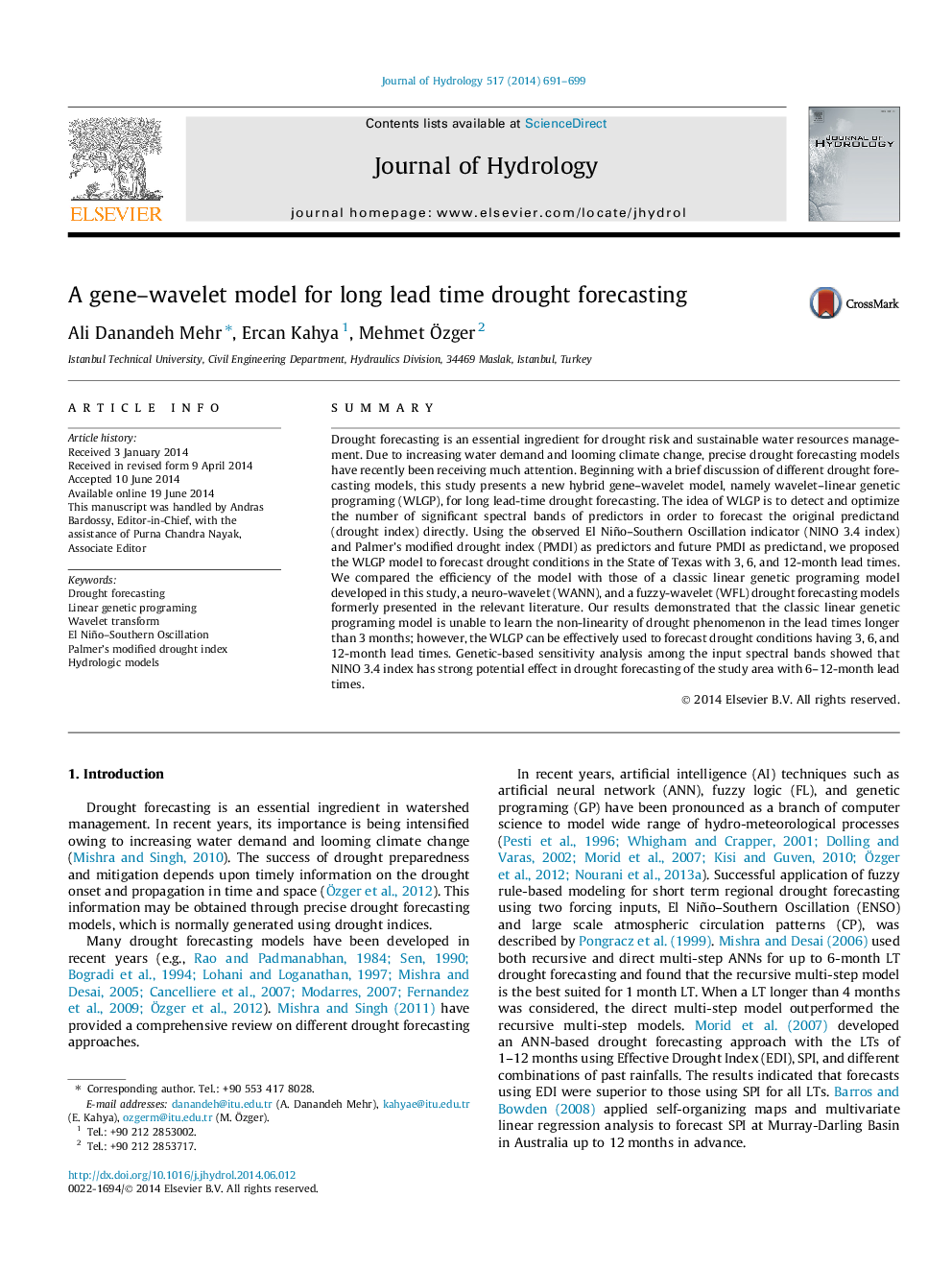| کد مقاله | کد نشریه | سال انتشار | مقاله انگلیسی | نسخه تمام متن |
|---|---|---|---|---|
| 6413015 | 1629931 | 2014 | 9 صفحه PDF | دانلود رایگان |
- We developed a gene-wavelet model (WLGP) for long lead time drought forecasting.
- The WLGP provides more accurate results than LGP.
- The WLGP is explicit and less complex than neuro-wavelet and neuro-fuzzy models.
- The WLGP optimizes its spectral inputs with the aid of its heuristics-based sensitivity analysis feature.
- NINO 3.4 index has strong potential effect in drought forecasting of the State of Texas with 6-12-month lead times.
SummaryDrought forecasting is an essential ingredient for drought risk and sustainable water resources management. Due to increasing water demand and looming climate change, precise drought forecasting models have recently been receiving much attention. Beginning with a brief discussion of different drought forecasting models, this study presents a new hybrid gene-wavelet model, namely wavelet-linear genetic programing (WLGP), for long lead-time drought forecasting. The idea of WLGP is to detect and optimize the number of significant spectral bands of predictors in order to forecast the original predictand (drought index) directly. Using the observed El Niño-Southern Oscillation indicator (NINO 3.4 index) and Palmer's modified drought index (PMDI) as predictors and future PMDI as predictand, we proposed the WLGP model to forecast drought conditions in the State of Texas with 3, 6, and 12-month lead times. We compared the efficiency of the model with those of a classic linear genetic programing model developed in this study, a neuro-wavelet (WANN), and a fuzzy-wavelet (WFL) drought forecasting models formerly presented in the relevant literature. Our results demonstrated that the classic linear genetic programing model is unable to learn the non-linearity of drought phenomenon in the lead times longer than 3Â months; however, the WLGP can be effectively used to forecast drought conditions having 3, 6, and 12-month lead times. Genetic-based sensitivity analysis among the input spectral bands showed that NINO 3.4 index has strong potential effect in drought forecasting of the study area with 6-12-month lead times.
Journal: Journal of Hydrology - Volume 517, 19 September 2014, Pages 691-699
